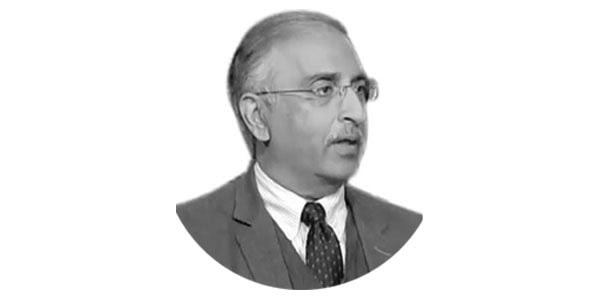IMF or no IMF?
A dilemma is a situation in which a difficult choice has to be made between two or more unfavorable alternatives.
Currently, we face the dilemma of whether or not to rely on the International Monetary Fund (IMF).
To make a decision, a systematic and evidence-based approach is needed. This includes identifying the problem, gathering information, generating alternatives, evaluating alternatives, and identifying potential outcomes.
Problem: Pakistan’s gross external financial requirement for this year is estimated at around $30 billion.
Over the next three years, Pakistan’s external debt repayment obligations are projected to be around $73 billion, including the current account deficit and debt repayment needs.
Alternatives: Pakistan’s potential funding sources include: International financial institutions such as the IMF, World Bank, ADB, and IDB; loans from countries such as China, Saudi Arabia, and the United States; issuing Sukuk or Eurobonds in the international capital markets; and remittances from Pakistanis working abroad.
Evaluating alternatives: The IMF is the only international financial institution that has the ‘Financial Sector Assessment Program’ (FSAP) or ‘Article IV Consultations.’
The IMF is not only a crucial institution for the World Bank, the ADB and the IDB but they are all often dependent on the IMF because of the unique role that the IMF plays in the global financial system.
More recently, a number of large bilateral lenders have also become dependent on the IMF because of the IMF’s ‘conditionality mechanism’ and the IMF’s risk mitigation capabilities. Unfortunately, Pakistan can no longer float Sukuk or Eurobonds in the international capital markets because of lower credit rating and debt sustainability issues.
Potential outcomes: Getting back into the Extended Fund Facility agreement that Pakistan signed with the IMF in 2019 would require at least three things. One, adopting exchange rate realism by devaluing the rupee.
Two, reducing the Rs4,000 billion circular debt in the electricity and the gas sectors (by increasing electricity and gas tariff). Three, imposing Petroleum Levy of Rs50 per liter on diesel. Getting back into the Extended Fund Facility will have two major outcomes.
One, the rupee will lose roughly 15% to 20% of its value against the dollar. Two, the Consumer Price Index will rise to over 30% (more inflation).
Abandoning the Extended Fund Facility agreement that Pakistan signed with the IMF in 2019 will have severe consequences for Pakistan.
These would include a sovereign default; a severe economic recession; a loss in the value of the rupee in the range of 20% to 30%; a Consumer Price Index of over 40%; a sharp rise in poverty; and a shortage of oil, food and life saving drugs.
Sri Lanka, Lebanon, Iran, Iraq, Venezuela, Sudan, Chile, Ecuador, and Haiti have witnessed street protests due to a rise in inflation.
In some of these countries, including Sri Lanka, Iran, Sudan, Lebanon, Iraq, and Chile, troops had to be deployed to control the protests.
Pakistan’s policymakers are currently facing a significant challenge in deciding whether to continue with the Extended Fund Facility agreement signed with the IMF in 2019 or to abandon it.
Both options have significant drawbacks. The country is facing a severe balance of payments crisis, high inflation, a large trade deficit, a rapidly expanding budget deficit, and a weak currency. The difficult political decision at hand is how to achieve macroeconomic stability while also protecting the welfare of citizens.










